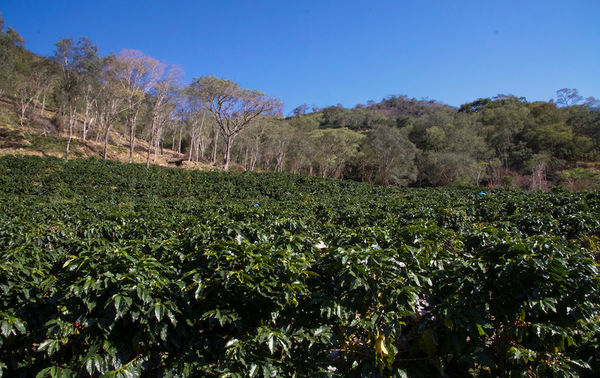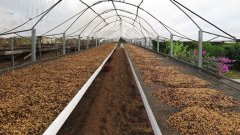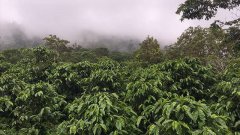Flavor characteristics of West Valley Coffee beans in the Western Valley of Costa Rica Coffee production

For professional baristas, please follow the coffee workshop (Wechat official account cafe_style)
Unique flavor
The most important feature of Costa Rican coffee is its unrestrained aroma, fresh and clean acidity, and a balanced and pleasant classic flavor. Costa Rica has the acidity of Central American coffee beans, coupled with years of variety improvement and honey treatment in Costa Rica, giving Costa Rican coffee a charming aroma and pleasant taste. Different degrees of honey treatment add a variety of unique flavors to the already prominent Costa Rican coffee, and people who have a special preference for the sweetness and cleanliness of the coffee can choose more accurately according to their preferences. The common flavors are herbage, citrus, hazelnut and caramel, rich and charming. Different baking degrees can also create a diversified style, this clear acidity, mellow taste, sweet-smelling "honey-treated coffee" has become the target of competition in the coffee industry in recent years.
Introduction of origin
Costa Rica is the country where coffee was first introduced into Central America and is deeply proud of growing and producing coffee. The government also attaches great importance to the development of the local coffee industry and promulgates strict environmental laws and regulations to protect the precious ecosystem. Costa Rica currently has more than 50, 000 coffee farmers. After years of innovation since its development in 1779, the coffee industry now has a complete industrial system and produces high-quality world-class coffee. The volcanic soil of Costa Rica is very fertile and well drained, and it is tempered by Pacific and Atlantic currents and sea breezes at the same time. Coffee trees are able to grow slowly in the most fertile volcanic ash soil and cool environment at high altitude, giving birth to coffee beans with complete and rich flavor. Costa Rica has seven major coffee producing areas, of which the Midwest Valley, Central Valley and Tarazu are of the best quality and have the longest history, and have long been recognized by coffee lovers all over the world.
Planting history of producing area
Between 1950 and 1960s, Costa Rica planted a large number of Villalobos species in the western valley, and in the late 1960s, Dutch traders introduced Villalobos to Indonesia for planting.
Planting altitude
Shumawa Manor is about 1670-1790 meters above sea level. In the western valley, another well-known producing area in Costa Rica, the poor temperature, coupled with fertile soil, is very suitable for coffee cultivation.
Important Notice :
前街咖啡 FrontStreet Coffee has moved to new addredd:
FrontStreet Coffee Address: 315,Donghua East Road,GuangZhou
Tel:020 38364473
- Prev

Costa Rican Coffee Story Bronka Treasure Manor Costa Rican Coffee Bean Geography
For the exchange of professional baristas, please follow the coffee workshop (Wechat official account cafe_style) Today, let's tell a story about the love and growth of coffee between Taiwan's bean-hunting team and Costa Rican manor owners. It was 2015, and when Lianjie's cup testing and purchasing team tested samples of the Costa Rican COE cup that year, they noticed a coffee with heavy honey treatment.
- Next

Costa Rican ear coffee brewing method Costa Rican immigrants drink coffee?
For the exchange of professional baristas, please follow the coffee workshop (Wechat official account cafe_style) Costa Rica is a famous coffee bean producer in Central America, which is famous for its excellent quality and refreshing and bright flavor for many years. In particular, the best-known local estate, Hacienda La Minita, which has been developed for decades, is located in S, the capital of Costa Rica.
Related
- Detailed explanation of Jadeite planting Land in Panamanian Jadeite Manor introduction to the grading system of Jadeite competitive bidding, Red bid, Green bid and Rose Summer
- Story of Coffee planting in Brenka region of Costa Rica Stonehenge Manor anaerobic heavy honey treatment of flavor mouth
- What's on the barrel of Blue Mountain Coffee beans?
- Can American coffee also pull flowers? How to use hot American style to pull out a good-looking pattern?
- Can you make a cold extract with coffee beans? What is the right proportion for cold-extracted coffee formula?
- Indonesian PWN Gold Mandrine Coffee Origin Features Flavor How to Chong? Mandolin coffee is American.
- A brief introduction to the flavor characteristics of Brazilian yellow bourbon coffee beans
- What is the effect of different water quality on the flavor of cold-extracted coffee? What kind of water is best for brewing coffee?
- Why do you think of Rose Summer whenever you mention Panamanian coffee?
- Introduction to the characteristics of authentic blue mountain coffee bean producing areas? What is the CIB Coffee Authority in Jamaica?

